Review
The new Kodiaq is better than its predecessor in every way and that is high praise. It’s roomy, comfortable and easy-going. The addition of a plug-in hybrid engine means that many drivers can now consider one as a company car for the first time.
Overview
The Skoda Kodiaq has been a strong performer for the Czech brand since its launch in 2016. It’s an excellent all-rounder, keenly priced and easy to live with.
For fleet customers, the lack of a plug-in hybrid (PHEV) or electric model has meant it’s often been off the shortlist. That’s all changed for the second-generation car, however. Alongside the petrol and diesel options, Skoda has introduced a PHEV that sits in the 5% benefit-in-kind tax band.
This new Kodiaq is longer than the old one, meaning there is more room for passengers and luggage alike. It has also some significantly new elements in the cabin, with a greater emphasis on sustainability.
The Kodiaq still relies heavily on technology from parent company Volkswagen, but for many is a better package than anything offered by other VW Group brands. Essentially, this new model is more of the same and, as before, it succeeds in looking smart, modern, functional and stylish.
Pricing starts at £36,645, for the entry-level petrol, and £41,935 for the PHEV.
Comfort and practicality
Having grown in length by 61mm, the new Kodiaq is very roomy – in fact it’s slightly roomier than before, with a larger boot and more headroom for those in the third row.
The PHEV is offered in a five-seat configurations, while the rest of the range can be specified with seven seats. In the five-seater version, luggage space has grown by 75 litres to 910 litres with the second row in use and 2,105 litres with it folded down.
The seven-seater now holds 340 litres behind the third row of seats, 70 more than before. The PHEV has a 745-litre boot capacity due to the battery being located under the floor. But that’s still massive.
The passenger seats split 60:40, and can be slid forwards or back to allow you to balance more boot space against rear occupant legroom. But even in the most cramped configuration adults will be comfortable.
Rear passengers get their own heating controls and phone chargers plus a centre console with oddments space and two cupholders. Handily, this can be removed if an adult is going to sit in the middle seat.
Up front, the centre console is a masterclass in practicality. With no manual gear selector to worry about (all versions are automatic), Skoda’s interior designers have made intelligent use of the freed-up space. There are up to four cupholders, depending how you choose to arrange it, plus wireless charging areas for two phones, a couple of C-USB ports and a lot of space in the armrest.
Safety and technology
The Kodiaq’s dashboard now hosts a 13-inch central touchscreen, which is logically laid out and very configurable. Three physical multi-purpose dials sit below the screen, and, between them, they adjust everything from the driving modes, to the audio volume and heating. It’s an intuitive, effective arrangement.
The steering wheel isn’t overburdened with controls, but those that are present are easy to operate without taking your eyes off the road.
There’s also a voice assistant system that is powered by ChatGPT which enables it to answer general knowledge questions as well as control vehicle functions.

Entry-level SE models are loaded with tech, including LED front and rear lights, heated front seats, keyless start, a digital instrument cluster and tri-zone climate control.
The SE model also comes with a range of safety systems as standard, including Front Assist with braking reaction to vehicles, pedestrians and cyclists, Blind Spot Detection with door exit warning and Front Cross Traffic Assist.
SE L models introduce LED Matrix headlights with AFS (adaptive front light system), AWL (all weather lighting system) and all-weather light with cornering function. The seats are electrically adjustable with driver’s seat memory function, while an electrically operated boot and keyless entry system is also fitted.
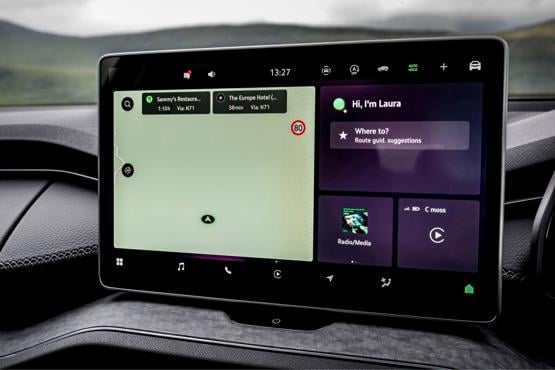
New nano radar sensors, positioned in the corners of bumpers, further enhance the performance of the driver assistance systems, such as Front Assist and Side Assist.
Among the new assistance systems which increase safety and comfort are Turn Assist, Collision Avoidance Assist, Crossroad Assist and Exit Warning. Turn Assist responds with a warning and, where appropriate, automatic braking if there is a vehicle approaching when turning in the face of oncoming traffic.
Collision Avoidance Assist automatically amplifies steering movements during sudden evasive manoeuvres.
Crossroad Assist uses radar sensors and the front camera to warn of crossing traffic, cyclists or pedestrians when pulling out of a driveway or blind exit. Where appropriate, it triggers visual and acoustic warnings and then automatically applies the brakes.
Exit Warning provides a visual warning in the exterior mirror as well as a warning sound when the door is opened while traffic is approaching from behind.
Driveability and efficiency
There are several engines to pick from. The petrol line-up includes a 150PS mild hybrid 1.5-litre petrol four-cylinder and a 204PS 2.0-litre TSI (which is all-wheel-drive only).
The diesel option is a 2.0-litre unit with 150PS or a 193PS (the latter being only for all-wheel drive). Some models are available with DCC adaptive suspension, which when set in Sport mode adds a welcome firmness.
The PHEV is front-wheel drive and seats five only. It has a six-speed DSG automatic transmission, where the others all have seven speeds. It is powered by a new 1.5-litre turbocharged petrol engine, paired with an electric motor. A 25.7kWh battery provides the zero-emission capability and is capable of charging at 11kW (AC) and 50kW (DC).
The mild hybrid, which we drove on a demanding route involving many hairpin bends and some fast motorway miles, returned an impressive real-world 35mpg. But as you might expect from a 150PS motor in such a big car, it doesn’t offer scorching performance. On those hills, it wasn’t exactly struggling but it certainly wasn’t shining. In more typical family driving, it’s smooth, lively enough and easygoing.
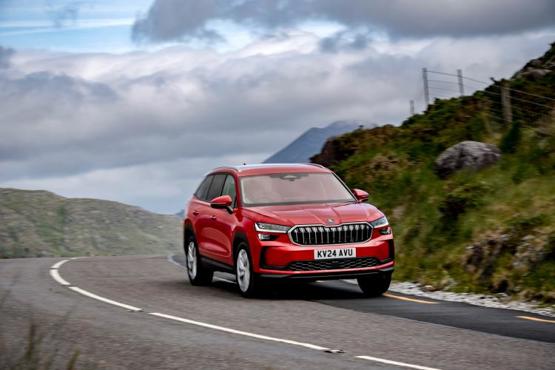
The plug-in hybrid is much perkier, reflected in a 0-62mph time that, at 8.4 seconds, is 1.3 seconds quicker. And if it replicates the official figures, it managed 63 miles of electric-only running in our hands and recharges quickly. Even with a depleted battery the powertrain was returning more than 50mpg.
Quite possibly the sweet spot in the range is the lesser of the two diesels. It combines a 9.6-second 0-62mph time with economy around 50mpg. Its torquey nature makes it feel faster than that, and it’s untroubled by hills or heavy loads. The more powerful diesel is faster off the line, with a 7.8-second sprint time, but it’s thirstier, has a higher CO2 output.
All this talk of performance is pretty much beside the point, though. The Kodiaq is not designed to be dynamically outstanding, and is at its best when it’s used for its core tasks of family holidays, the school run, shopping and taking vast quantities of garden waste to the tip.
Ride quality is good, but the body gets wobbly if you hammer it hard through the bends. And the steering is always a little vague and remote. That may change when the vRS version arrives, but for now the Kodiaq is going to bring at least as much pleasure to the passengers as to the driver.
Company car tax and running costs
Petrol and diesel variants of the Kodiaq attract at least a 32% benefit-in-kind tax, rising to 37% for the all-wheel-drive diesel variant. This makes them unlikely choices for most fleet drivers, who’ll pay almost £200 per month in tax for the cheapest version.
Those that need to tow or that do very high mileages may find the 2.0 TDI fits their needs best, but for most drivers we expect the PHEV to be the model of choice.
At less than £42,000, and with a zero-emission range of 70 miles (WLTP), the car sits in the 5% tax band and is considerably cheaper for drivers. A 20% taxpayer can expect bills of just £35 per month.
Businesses also benefit from the PHEV, thanks to its impressive real-world fuel economy. Running costs are 36ppm, over a four-year cycle, making the Kodiaq 4ppm cheaper than a Kia Sportage PHEV.
Specs
| Manufacturer | Skoda |
| Model | Kodiaq Estate |
| Specification | Skoda Kodiaq Estate 1.5 TSI iV 204 SE 5dr DSG |
| Model Year | 2026.00 |
| Annual VED (Road tax) | £110 |
| BIK List Price | £41,880 |
| Range | 74.00mile(s) |
| CO2 | 9g/km |
| BIK Percentage | 6% |
| Insurance Group | N/A |
| CC | 1,498 |
| Fuel Type | Petrol Parallel PHEV |
| Vehicle Type | Large SUV |
| Luggage capacity (Seats up) | 745litres |
| Doors | 5 |
Running Costs
| P11D | £41,880 |
| Cost per mile | 42.87ppm |
| Residual value | £19,400 |
| Insurance group | N/A |
| Fuel Type | Petrol Parallel PHEV |
| Cost per mile | 126.66ppm |
| Fuel | 0.91ppm |
| Depreciation | 123.35ppm |
| Service maintenance and repair | 2.40ppm |
Rivals
Info at a glance
-
P11D Price
£41,880
-
MPG
688.8 (WLTP) -
CO2 Emissions
9g/km -
BIK %
6% -
Running cost
3 Year 60k : £19,400 4 Year 80k : £15,800 -
Fuel Type
Petrol Parallel PHEV -
Range
74.00mile(s)



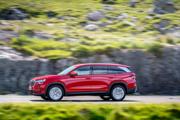


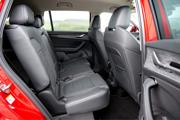

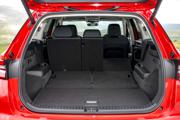

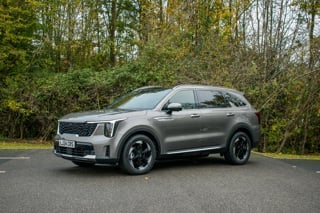



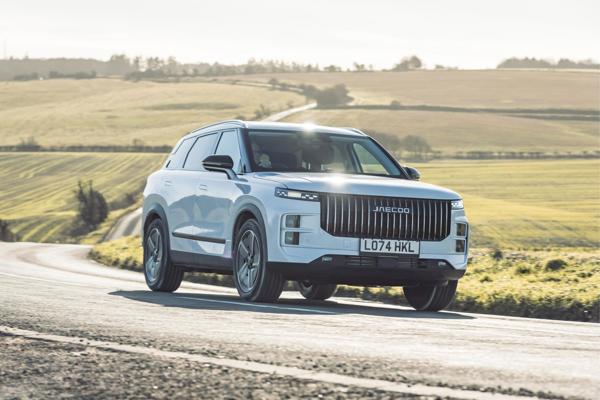

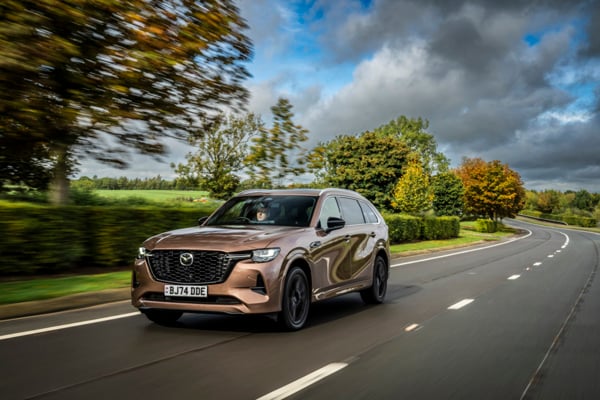
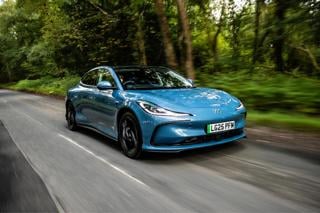
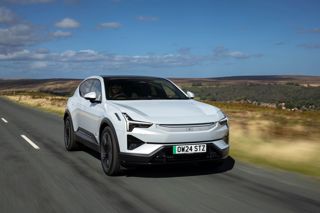

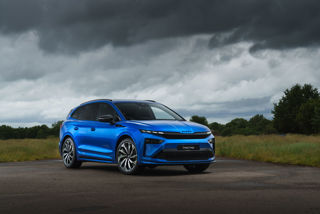
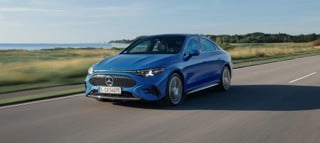












Login to comment
Comments
No comments have been made yet.